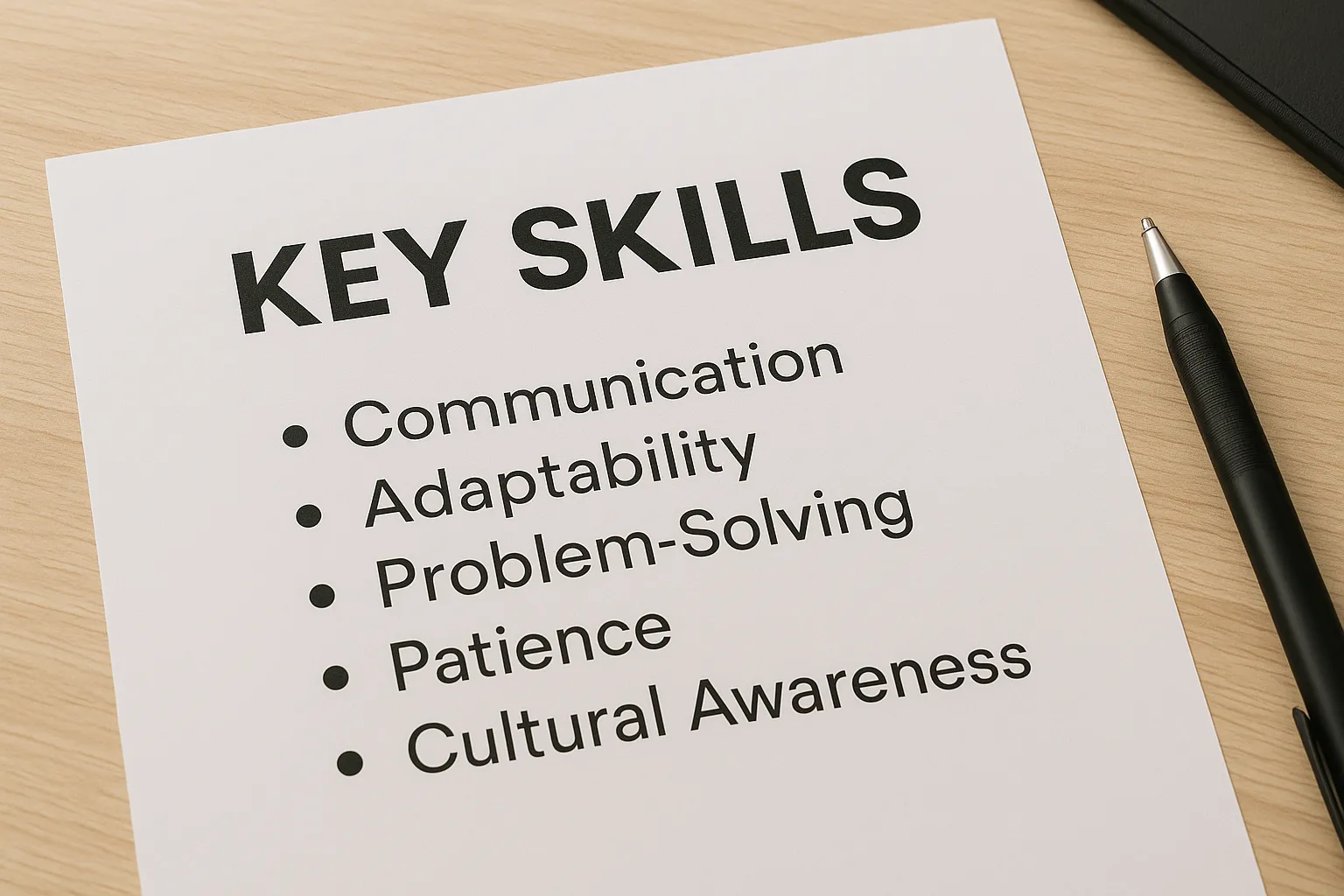You finished college with solid grades and a degree in hand. Now what? The reality hits fast when you see dozens of students applying for the same entry-level job postings you’re interested in.
Believe it or not, landing that first role feels harder than you expected, even with strong academic performance.
These student career tips will show you how to stand out. You’ll learn how to build an attractive resume, use internships to gain experience employers want, and connect with the right people who can help your career. You’ll also see what data shows about successful job market launches.
If you’re stepping into the professional world for the first time, keep reading to learn everything you need to know about starting your career on the right foot.
Building a Resume That Opens Doors
Staring at a blank document feels overwhelming when you’ve never written a resume before. You’re probably worried you don’t have enough to include. Trust us when we say that you likely have more than you realize.
Start With What You Have
Campus involvement counts as real experience.
Group projects for your major show teamwork, while volunteer activities demonstrate commitment. Leadership roles in student organizations prove you can manage responsibilities, and even part-time job positions teach valuable skills that employers want to see.
The truth is, recruiters care about what you learned and how you grew, not just fancy job titles. Data shows that demonstrating your abilities carries more weight than having years of formal employment listed.
Format for Readability, Not Creativity
Hiring managers review hundreds of resumes daily. You must be wondering, but how? They spend just a few seconds on each one before deciding to keep reading or move on.
That’s why a clean layout with clear sections beats elaborate designs every time. Thus, we recommend that you stick with standard fonts and use bullet points to highlight accomplishments. Remember to leave enough white space so your content doesn’t feel cramped or hard to scan.
Customize Every Application
The same generic resume sent to every company wastes everyone’s time. Instead, read each job posting carefully and note which skills they emphasize. Then adjust your resume to highlight relevant experiences that match what they need.
Note that customizing shows genuine interest rather than a generic approach to applying. Plus, a strong resume opens doors, and internships give you real experience to back up what you’ve written.
Why Internships Give You the Edge

A polished resume helps you get noticed, but employers want proof. This is where internships help! They provide exactly that kind of proof.
The numbers tell us that college students who complete internships land jobs faster than those who skip them. Why? Internships let you gain experience in real work settings before you even graduate.
Think of internships as extended job interviews. Companies get to watch how you handle actual responsibilities over weeks or months.
During internships, you’ll learn how the industry works, pick up skills your courses didn’t teach, and see how different organisations run their operations. Meanwhile, employers observe how you collaborate with teams, handle deadlines, and respond when problems pop up.
What’s more, internships help you determine what you want to do with your career. You might love the field you studied, or you might realise you need to explore other options before committing.
Either way, finding out early beats accepting a job you’ll regret six months later.
Network Your Way to Better Opportunities

Networking sounds intimidating if you’ve never done it before. Let’s be honest, you don’t need to be naturally outgoing to build professional connections. You just need to be intentional about who you talk to and how you follow up.
Four practical ways to expand your professional circle:
- LinkedIn profiles: Upload a professional photo and write a headline that clearly describes your goals. Recruiters use websites such as LinkedIn constantly to find candidates, so a complete profile makes you easier to discover.
- Informational conversations: Most professionals appreciate when students show genuine curiosity about their work. Therefore, we suggest that you contact individuals in fields that interest you, ask for a 20-minute meeting, and prepare specific questions. Don’t forget to follow up with a thank-you note afterwards.
- Career fairs: Job fairs and alumni panels happen regularly at most universities. Here’s a tip: show up with researched questions about the companies attending. Our intel tells us that many employers prefer meeting students face-to-face before reviewing their resumes online.
- Alumni connections: Your university gives you access to graduates working across countless industries, which is easier to tap into than you might think. Search LinkedIn or use your college’s alumni directory to find people in roles you want.
One good conversation can open doors you didn’t know existed. So, start building these connections now instead of waiting until you need a job.
What Employers Find When They Google You

Before you land an interview, employers have already checked you out online. They search for candidates on Google and review social media before making hiring decisions. What they discover affects whether you get called back.
Start with these steps to manage your online presence:
- Search yourself on Google: Old posts, tagged photos, or forgotten comments might still appear on the first page. You should remove anything that looks unprofessional or adjust your privacy settings immediately to control what recruiters see.
- Audit your social media: Hiring managers review accounts the same way they review resumes. So, always present yourself as someone organizations would confidently hire without erasing your entire personality.
- Build your professional profile: LinkedIn profiles that stay current and share relevant content catch recruiters’ attention. Portfolio sites work well for creative fields. The goal is to ensure employers find positive information when looking up online resources instead of concerning content.
Your digital footprint sticks with you throughout your career, which is why we recommend taking control now. It will save you from awkward conversations during interviews later.
What Data Shows About Getting Hired
Your digital presence plays a role, but understanding what leads to job offers helps you focus your efforts where they count most.
Quality Beats Quantity in Applications
Students who apply to fewer jobs but customize each application have better success rates than those who send out hundreds of generic resumes.
Why does this work? Employers can tell when you’ve researched their company and tailored your materials. Our research found that tailored resumes generate approximately twice the interview opportunities compared to generic submissions.
Timing Your Search Right
Most organizations post entry-level job postings between January and March for spring graduates, then again in September and October. The pattern repeats year after year, so you can plan around these hiring cycles.
Applying during these peak windows puts you in front of recruiters when they’re actively filling multiple positions at once. More open roles mean faster response times and better chances of landing interviews.
Skills That Get You Hired
College students often focus on technical skills from their major, but here’s what employers care about instead. Communication skills, problem-solving, and the ability to work in teams consistently rank as the top three factors in hiring decisions.
LinkedIn’s 2019 Global Talent Trends report found that 92% of employers value soft skills equally to hard skills, or even place them higher when evaluating candidates.
Understanding these patterns helps you approach your job search strategically instead of feeling overwhelmed by the process.
Your Career Journey Starts with One Smart Move
You’ve learned how to build a resume that stands out, why internships open doors, how networking creates opportunities, and what employers look for online. These career tips give you a clear path forward.
You don’t need to do everything at once. Pick one action to take today. Update your resume. Research internships in your field. Small steps lead to bigger results.
Arizona Observatory has spent 15 years helping college students launch successful careers. We know how competitive the job market has become. Our services include resume writing, interview preparation, and personalized career guidance.
Ready to start your career on the right foot? Contact us to learn how we can support your goals and help you land the job you want.


















